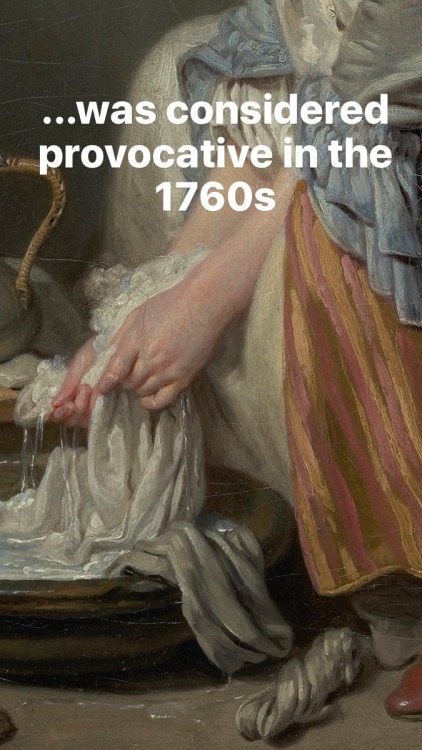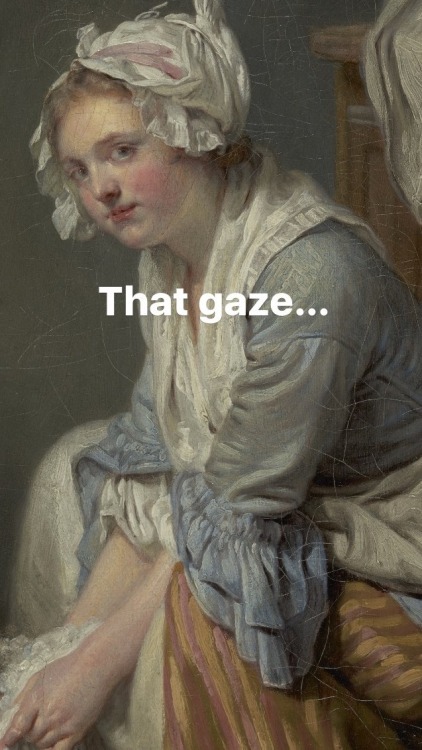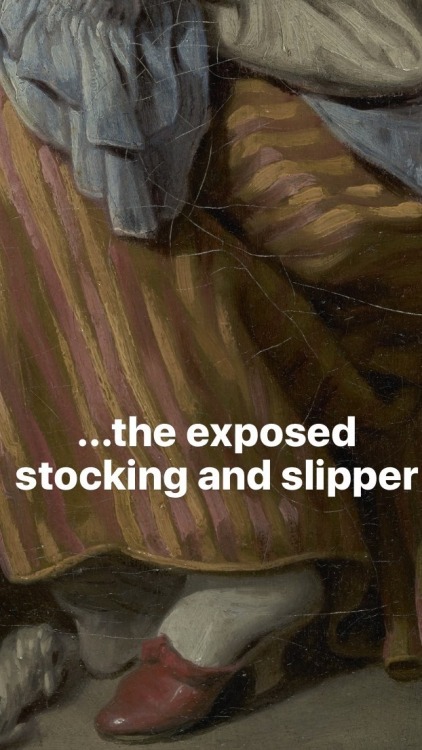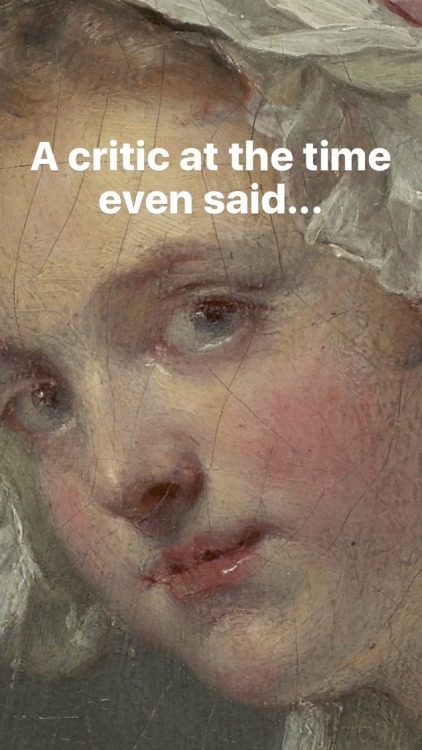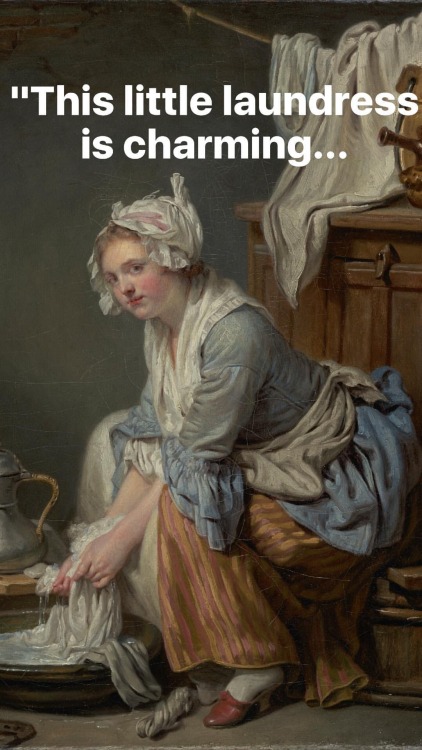we-are-rogue: beggars-opera:butim-justharry:licieoic:rush-keating:npr:thegetty:The story
we-are-rogue: beggars-opera: butim-justharry: licieoic: rush-keating: npr: thegetty: The story behind The Laundress. This is so good. -Emily I find that hard to reconcile with how 18th century dresses had boobs practically hanging out of them. Maybe the chest wasn’t as sexualized as the ankles were back then… I have a dim memory from back in high school… I think someone once told me that breasts were no big deal back in corsetry-and-necklines-down-to-there days, they were considered a food source for children and that’s it. But ANKLES. Oh, GOD. ANKLES. The ANKLE was connected to the LEG, which connected to THIGHS, which hid a woman’s SECRET FLOWER. The ankle was the gateway to the secret flower, so it was considered quite a stirring sight! I have never considered that “leg bone connected to the ankle bone” song as a sexy tune before but Ankles were not universally considered scandalous. Not in the 18th century anyway. If that laundress actually stood up, her petticoats were likely short enough to, you know, do laundry without tripping over herself. The idea of this painting being sexy was very subtle. It’s based on her being generally unkempt, and that she’s wearing super-casual mules, that are honestly painted so small she almost wouldn’t be able to fit her foot inside (generally a working woman wouldn’t wear mules that tiny; that was something wealthy women did to show off and look sexy-casual). You’re seeing way more of her foot than you should if she was in polite company, and in shoes that are tiny and impractical. The idea that she’s so casual with her footwear that her foot is basically popping out of the thing meant that she might be… so casual with other things, if you catch my drift. Petticoat/skirt length varied quite a lot more than you’d think back then, and while there were ideas about respectability mixed in there, generally it had to do with how much physical labor you’re performing. You rich and going to be lounging on a couch all day? Sure, go for that floor-length gown. But don’t expect to be able to carry anything up the stairs. This Hogarth print from 1741 gives a good idea of your average petticoat length. Most of the extant clothing and art we have comes from the elite, who had no need to carry giant things around while also dealing with a half-dozen screaming children at the same time. But if you go digging a little bit, you can find hints of what the lower class sort looked like. Images of street peddlars are especially great; a lot of the images came out in the 1790s but the fashion in them tends to skew earlier in style due to poverty. You’ll see that you can go from mid-calf all the way to ankle length. The difference is that these were generally drawn to represent real people doing real things, and not as titillation for rich perverts. For a while, it was even a fad for rich folk to have ridiculously short petticoats, as Marie Antoinette had started a fashion trend of wearing a “shepherdess” outfit with a short petticoat - because shepherdesses are working class, and needed their petticoats to be that short. Later on in the 19th century, it became much more common for dresses and skirts to be floor length once you hit puberty, and that combined with general Victorian prude culture gave rise to the whole “scandalous ankle” thing. This is all fascinating, but about Greuze’s Laundress in particular, we need to take into account what kind of art it breaks away from. We’re in 1761, this is the exact moment when courtly and upper-class rococo starts to dissolve (thanks to people like Greuze, among others). And rococo didn’t shy away from ankles: François Boucher, Marie-Louise O'Murphy (one of the mistresses of King Louis XV), 1752. “Under Louis XV [1715-1774] the same nobility professes a hedonism which is also in harmony with the outlook and the way of life of the rich bourgeoisie. […] Love has become sophisticated, amusing, docile, a habit where it used to be a passion. There is a universal and constant desire to see pictures of the nude; it now becomes the favourite subject of the plastic arts. Wherever one looks, whether at the frescoes in state apartments, the gobelins of the salons, the paintings in boudoirs, the engravings in books, the porcelain groups and bronze figures on mantelpieces, everywhere one sees naked women, swelling thighs and hips, uncovered breasts, arms and legs folded in embraces, women with men and women with women, in countless variations and endless repetitions. Nudity in art has become so habitual that the ingénues of Greuze produce an erotic effect merely by putting their clothes on again.” ~ Arnold Hauser, The Social History of Art Vol. III: Rococo, Classicism and Romanticism (emphasis mine) There are many details that make this painting sensual for its time, but it wasn’t the sensuality itself that made an impression. It’s that it was a fully dressed washerwoman being sensual all over the place. Who, according to all the conventions of art, was supposed to evoke virtue and hard work, humbleness and servility. Sensuality, subtle or overt, was not for the likes of her, it was reserved for another class altogether. THAT was the novelty. That said, The Laundress didn’t cause a scandal. When it was exhibited, it was well-received. The sensuality was noticed and remarked upon, from Diderot’s “a rascal I wouldn’t trust” comment (which, to be clear, is praise: Diderot was a big admirer of Greuze, and found the painting charming and lifelike), to Journal Encyclopédique’s description “a laundress who casts a glance that is as flirtatious as it is cheeky.” (No one mentioned ankles, AFAIK.) But it didn’t cause an uproar or anything, critics were generally pleased with it. tl,dr; Neither bare ankles, nor paintings of bare ankles, nor this painting in particular were ever considered scandalous. At the time, nudity and sensuality in art was normal. The Laundress is only exceptional because she’s working, and she’s DRESSED. [See also: Colin B. Bailey, Jean-Baptiste Greuze, The Laundress [PDF] (Getty Museum Studies on Art)] -- source link
#history#art history

